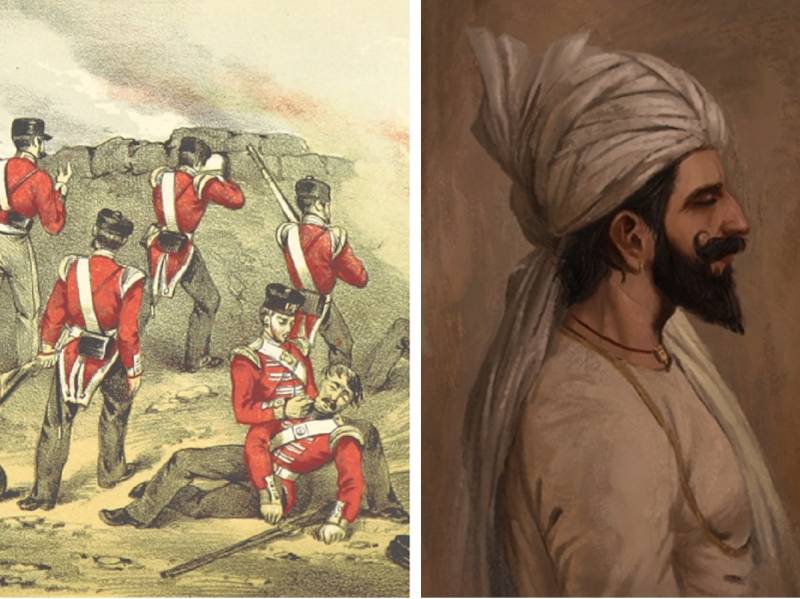
Regional history has become part of mainstream discourse in academia. The idea is to unfold the regional history of the city, area or region to holistically understand a historical process and merge it with national identity and narrative.
Punjab is a region with unshakable historical roots, and it played a vital role in the significant events of the Subcontinent. Generally, it is perceived that Punjab always tilted towards the status quo and establishment. This common perception reflects the need for more awareness of history – especially popular resistance figures like Dulla Bhatti (1547-1599), Rai Ahmad Khan Kharal (1785-1857), Madan Lal Dhingra (1883-1909), Kartar Singh Sarabha (1896-1915), Udham Singh (1899-1940) and Bhagat Singh (1907-1931).
Turab ul Hassan Sargana in the book Punjab and the War of Independence 1857-1858: From Collaboration to Resistance attempted to context the above-mentioned general perception. Mr Sargana argued that an overwhelming majority of elite collaborators and local leaders, with the support of the masses, had shown resistance. Among them, Rai Ahmad Khan Kharal had emerged as the symbol of resistance against the British in the 1857 War of Independence.
Rai Ahmad Khan Kharal was born in a village named Jhamra, which is located in modern-day Sahiwal near Bangla Gogera in Okara. During that time, Gogera was a district. When the war of independence broke out, the British asked local leaders to provide workforce and support. Khan categorically refused to provide any assistance. This refusal to collaborate with the colonial authorities is celebrated in folk poetry as well. In Punjab, it was not the people of Gogera who fought against the British, but the Murree locals also gave the British a tough time. A meeting of regional clans was held, and they decided to oppose the British under the leadership of Ahmad Khan.
Meanwhile, Sarfraz Khan Kharal, a resident of Kamila who is a revival of Rai Ahmad Khan Kharal, informed the Deputy Commissioner Lieutenant Elphinstone about the meeting. As a result, the next day, on the 17th, the District Commissioner sent Assistant Commissioner Lieutenant Leopold Fitzgerald Berkeley to Jhamra to arrest Ahmad Khan, but it was unsuccessful. However, to put Ahmad Khan under pressure, his young son was taken into the administration's custody. Moreover, as a reaction, Berkeley attempted to destroy Jhamra. On the 21st ofSeptember, a battle was fought between freedom fighters led by Rai Ahmad Khan Kharal and British forces. Ahmad Khan lost his life.
As an act of revenge, Suja Badru, Murad Fitana and other comrades of Ahmad Khan murdered Berkeley on the 22nd of September. Ironically, he was buried near Gogera.
Here, it is worth mentioning that in Delhi, the British established their control in September 1857, but in Gogera, this resistance movement continued till January 1857.
The Orientalists tagged freedom fighters as criminals; but in cultural collective memory, they are heroes who sacrificed their lives for the motherland.
Renowned British historian Arnold Toynbee mentioned the Challenge and Response theory. He argued that as long as a creative minority would respond to challenges, a civilisation would survive and rise. When the creative minority failed to respond to challenges, the civilisation would decline. In the context of British India, there was a deliberately created elite, installed by the colonial rulers, which came to dominate the creative minority.
During the British Raj, there were largescale social, political and economic changes. Primarily, it was the transformation of agriculture in the form of canals, irrigation systems, canal colonies and roads. This socioeconomic development also served the British imperial interests on the economic and political front and ultimately strengthened the roots of the foreign Raj. The colonial administration used local collaborator elites as a safeguard between the people and the administration.
In the post-independence 1947 context, as the British left India after dividing it into two new states, Pakistan and India, the role of the ‘Created Collaborator Elite’ transformed from intermediaries to political masters. It is this category of elites who still dominate the political sphere of Pakistan.

